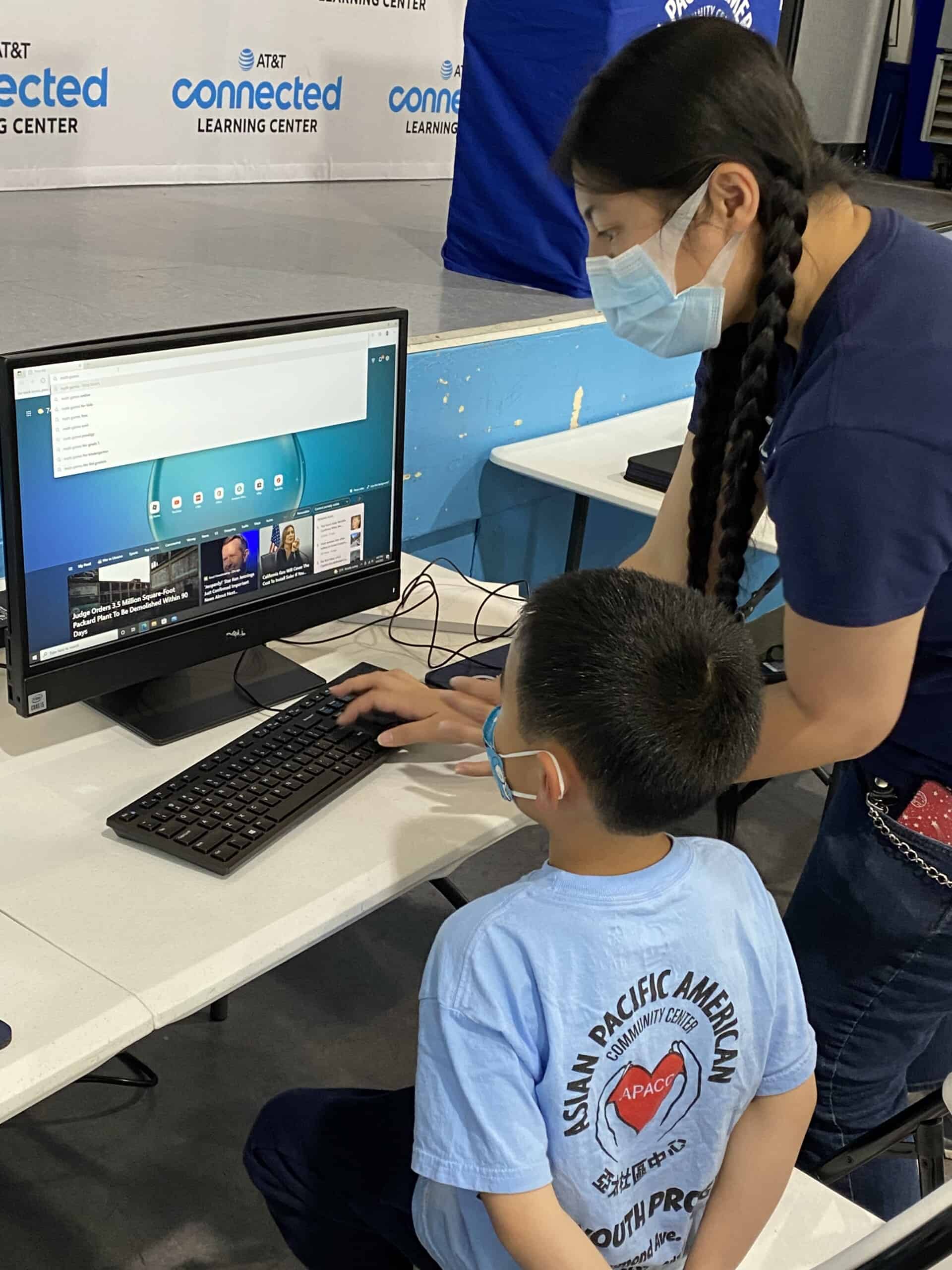At BroadbandNow, our mission is for every American to have access to affordable broadband internet. Below is our conversation with Jeff Luong, who leads AT&T’s efforts on broadband adoption and access initiatives. If you have a trailblazer to nominate, reach out to us at trailblazers@broadbandnow.com.
Q: Jeff, can you describe your role at AT&T?
I lead a team that is dedicated to working with state and local governments to help close the digital divide. These governments often have federal funds available that they can invest in building broadband networks. We assess the situation, submit our bids, and work closely with these entities on solutions that are best suited for their communities.
So far, we’ve had some early significant wins, including fiber broadband expansion in places like Vanderburgh County and Boonville, Indiana and in Oldham County, Kentucky. These are areas where residents are desperate to be connected to high-speed reliable internet, and we’re committed to reaching as many of them as possible.

Q: When we talk about the digital divide, we often focus on physical access, and that’s certainly very important. What do you see as the other dynamics that make up the divide?
At AT&T, we talk about digital divide in terms of access, affordability and adoption.
In addition to our recent achievement in expanding access to rural communities, we have also put a lot of work in on affordability and adoption. For example, I recently attended a White House ceremony where AT&T and other providers were recognized for their work with the Affordable Connectivity Program (ACP). That federal program provides eligible households with a $30 per month benefit ($75/month on Tribal Lands) to reduce the cost of their broadband bill. AT&T was among the first internet service providers to offer a specific rate plan designed to work with the ACP to allow customers to essentially eliminate their monthly internet bill. Eligible consumers can combine their ACP benefit with our newest Access from AT&T plan, receive up to 100 Mbps with no data caps, and take their net monthly cost for internet to zero.
The third leg of the digital divide stool is adoption. We need every family to understand the importance of broadband and the benefits that it can bring to their lives. We’re doing that through our AT&T Connected Learning Centers as well as with the Public Library Association, which we’re working with to launch digital literacy courses and workshops across the U.S. These workshops are designed to help those who are new to digital technology build skills and confidence to use computers and mobile devices safely and responsibly.
Q: In April, AT&T opened its first Connected Learning Center in San Francisco. Can you describe the services it offers? What will represent “success” for you as these open up across the U.S.?
AT&T Connected Learning Centers are places where students and families in underserved communities can go to get free access to the internet and computers to participate in online learning, do schoolwork, look for jobs, check their bank account and also have an opportunity to be mentored. They also have access to free digital literacy and education resources to encourage digital engagement and to help them learn essential skills needed for a 21st century world. We’ve now opened 13 centers around the country. The Connected Learning Centers, all housed within existing community centers and non-profit locations, are part of our AT&T Connected Learning initiative, a $2 billion, 3-year investment to help bridge the digital divide.

Quite frankly, success looks like inspiring as many students and families as possible to get connected. One of my enduring memories is my parents saving up to buy our family an IBM XT computer. It took them over a year to save the money, but the investment changed my life as I pursued a career in engineering. I hope we can do the same for students and families going to AT&T Connected Learning Centers.
Q: When it comes to rural areas that don’t currently have reliable, high-speed internet how are you thinking about technology options given that it’s not feasible to have Fiber To The Home for every household.
I’ll start by saying that ending the digital divide is a joint effort of government and the entire private sector. No one company is likely to have all of the technology solutions needed to bring broadband to every household. We believe fiber should always be the first choice, but it may not always be practical or economical as a means to reach every household. Where fiber just isn’t practical, technologies like 5G wireless can offer viable alternatives to fill the gaps. Communities need to carefully assess their needs and their budgets and decide which technology will serve them best. Regardless of technology, public-private partnerships are the most effective and efficient way to expand broadband access.
Q: What is the opportunity to close the digital divide on tribal lands?
One reality of the digital divide is that Native Americans on Tribal Lands are among those least connected to high-speed Internet. This needs to change, and there are a variety of federal funds set aside that Native American tribes can use for building broadband networks. In addition, the federal Affordable Connectivity Program has enhanced benefits of $75 a month for eligible households on tribal lands to lower the cost of broadband.
One example of how AT&T can potentially play a role in bridging this particular digital divide is with the Rincon Band of Luiseño Indians in Southern California as they seek to bring broadband service to more than 400 homes on Rincon tribal lands.
Together with the Rincon Tribe, we see fiber as an asset that can provide more educational opportunities, enhance and improve access to healthcare, and strengthen the ways the community can connect with one another.
However, we recognize that fiber may be difficult to deploy in many tribal lands. This is where 5G wireless solutions should be considered. Many of these areas currently have very limited connectivity and in some cases no connectivity. Both fixed and mobile wireless solutions leveraging broad portfolio of licensed spectrum need to be considered. Low-band spectrum provides expansive coverage across many miles, while mid-band spectrum provides robust capacity and speed. Tribal entities should work with reputable companies with extensive experience to design a network that is tailored for their community.
